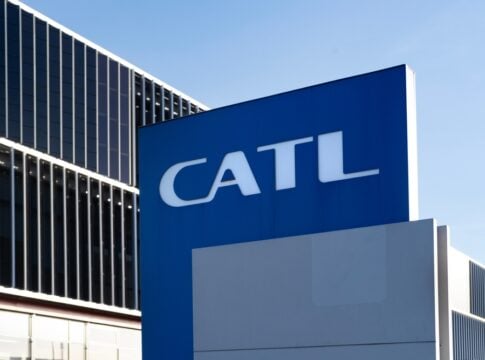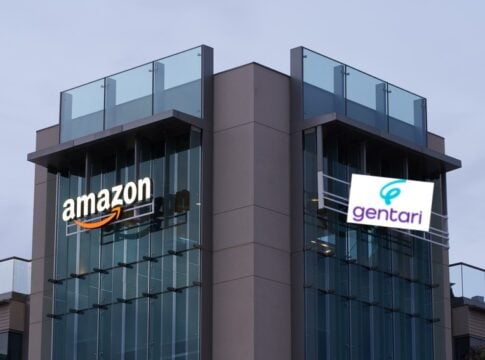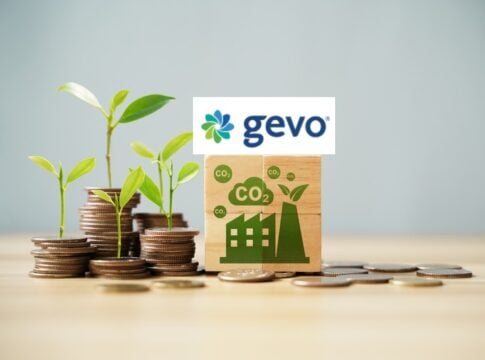As per top media reports, China’s battery leader, Contemporary Amperex Technology Co. Ltd. (CATL), has stopped operations at a key lithium mine. This move surprised commodity markets and led to a rise in lithium prices. The shutdown occurred because of an expired mining license. It also comes as Beijing tightens control over excess capacity in the lithium sector.
CATL’s Major Lithium Hub Falls Silent
CATL’s mining license for the Jianxiawo lithium project in Yichun, Jiangxi, expired on August 9, 2025. Without approval to continue, the company closed the mine. CATL is now seeking a renewal. They aim to restart operations “as soon as possible.” However, experts believe the process may take at least three months due to current regulations.
Reuters highlighted that the Jianxiawo site, hailed as the “Lithium Capital of Asia,” produces over 46,000 metric tons of lithium carbonate equivalent (LCE) each year. This amount is about 3–6% of the world’s expected output for 2025. Even a short disruption at this key facility impacts global supply chains.
Beijing’s Crackdown on Overcapacity
This shutdown fits into Beijing’s broader efforts to control fast-growing industries. Officials target sectors with overcapacity, including steel, coal, and renewable materials. The lithium industry, which surged during the 2020–2022 price boom, is now under scrutiny.
Recently, authorities also ordered Zangge Mining in Qinghai province to halt production. CATL’s closure is the first major suspension in Yichun, showing that no company is safe from government actions.
Cost Pressures Threaten Viability
CATL’s cost structure shows the challenges miners face. Reports suggest production costs at Jianxiawo are around RMB 100,000 ($13,920) per ton, much higher than current market prices. This means the mine has been operating at a loss, which regulators may consider when reviewing its license renewal.
If Beijing aims to cut oversupply, delaying permits for high-cost operations like Jianxiawo could help stabilize prices.
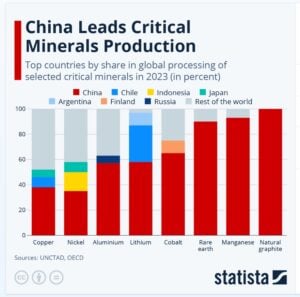
Lithium Stocks Surge on Supply Jitters
The market reacted quickly to CATL’s announcement. Lithium carbonate futures on the Guangzhou Futures Exchange jumped 8% to the daily limit. The shutdown led to a surge in lithium stocks, and shares of lithium miners worldwide rose sharply. Investors expected a tighter lithium supply and higher prices.
As per Bloomberg,
- In Hong Kong, Tianqi Lithium’s shares jumped 19% and China’s Ganfeng Lithium rose by 21%.
Australian miners also saw strong gains in a single day due to speculative buying. Even North American lithium producers, who faced heavy losses, gained renewed interest. For instance, Albemarle also benefited from rising investor optimism
Traders believed China’s supply cuts could benefit global competitors. Analysts say this rally shows both short-term speculation and hope for lithium price recovery from Beijing’s actions.
Regulatory Hurdles Ahead
Renewing a mining license in China involves multiple reviews. Environmental impact assessments, land use compliance checks, safety protocols, and community impact studies are all part of the process. Authorities also assess resource utilization efficiency to ensure sustainable operations.
Lithium is essential for electric vehicle (EV) batteries, especially lithium iron phosphate (LFP) types that dominate CATL’s production. With CATL holding a 37.9% share of the global EV battery market in the first half of 2025, any disruption to its lithium supply could lead to wider effects.
For CATL, the stakes are high. The Jianxiawo mine is crucial for its business model, supplying lithium for battery production and reducing reliance on imports. A prolonged shutdown may force the company to source more lithium abroad, increasing costs and complicating logistics.
Higher raw material costs, supply bottlenecks, and delivery delays may impact automakers relying on CATL’s batteries. Although the global market is oversupplied, local disruptions can still cause temporary price spikes and strain supply chains.
China’s Expanding Lithium Mining Power
Despite challenges, China’s lithium dominance is expected to grow. Fastmarkets predicts the country will surpass Australia as the world’s largest lithium producer by 2026, with 8,000–10,000 metric tons more output than its rival. This is a significant increase from 2023, when China ranked third after Australia and Chile.
However, many Chinese producers struggle with current prices, and government actions could reshape the industry. The goal seems to be a more efficient sector with stronger environmental compliance.
Market Outlook: Short-Term Lift, Long-Term Questions
Trading Economics highlighted that, in August, lithium carbonate prices climbed above CNY 75,000 per tonne, reaching their highest level since March.
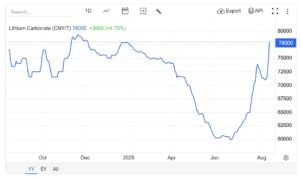
The post Lithium Prices Jump as CATL Shuts Major Jianxiawo Mine in China appeared first on Carbon Credits.
Carbon Footprint
Fortescue and China’s $2B Green Deal: Can the Australian Iron Ore Giant Go Fossil-Free?
Fortescue, one of the world’s largest iron ore producers and a leading player in green energy, has secured a $2 billion loan from Chinese banks to accelerate its decarbonization plans. The funding is part of the company’s broader goal to achieve net-zero emissions by 2030 for its Scope 1 and Scope 2 operations.
The loan marks one of the largest green financing deals between an Australian mining company and China. It comes when demand for low-carbon industrial production is rising. This growth is due to global climate goals and investor pressure for cleaner operations.
Fortescue will use the funds for several key projects, particularly renewable energy projects. They will replace diesel-powered equipment with electric options. Also, they will invest in green hydrogen production.
Where Will Fortescue Spend the $2 Billion?
Mining is one of the most carbon-intensive industries. Fortescue operates in the Pilbara region of Western Australia. Right now, they rely mostly on fossil fuels, especially diesel. This fuels their mining trucks, trains, and power generation.
However, the company plans to stop using fossil fuels by 2030. This bold goal needs a lot of investment.
The $2 billion loan will fund infrastructure upgrades. This includes renewable energy projects, electric transport fleets, and hydrogen systems. According to Fortescue, these measures could cut millions of tons of carbon dioxide equivalent (CO₂e) from its annual emissions.
Andrew Forrest AO remarked:
“This isn’t just a financial transaction. It’s a signal of what is possible when partners are aligned in ambition. As the United States steps back from investing in what will be the world’s greatest industry, China and Fortescue are advancing the green technology needed to lead the global green industrial revolution.”
China’s Role in the Green Mining Shift
China is Australia’s largest iron ore customer and also a rapidly expanding player in green finance. By working with Chinese banks, Fortescue strengthens both its financial position and its long-term commercial relationships.
For China, supporting Fortescue’s decarbonization aligns with its own push for greener supply chains. The world’s largest emitter is working towards its 2060 carbon neutrality goal. It is urging major suppliers to cut emissions, particularly in resource-heavy sectors.
This financing could open doors for Chinese investment in Fortescue’s green hydrogen projects. These projects aim to export clean energy to global markets, like China.
- SEE MORE: China’s First-Ever Sovereign Green Bond Hits Global Market: Will It Power Its Net Zero Ambitions?
From Ore to Zero: Fortescue’s Bold 2030 Pledge
In 2024, Fortescue reported the following GHG emissions profile:
- Scope 1 and 2 Emissions: 2.72 million tonnes CO2e (combined direct and purchased energy emissions for Fortescue’s operations).
- Scope 3 Emissions: 269.31 million tonnes CO2e, roughly 100 times greater than Scope 1 and 2 combined.
- Majority Source of Scope 3: The steelmaking process downstream accounts for about 97% of Scope 3 emissions (262.16 million tonnes CO2e).
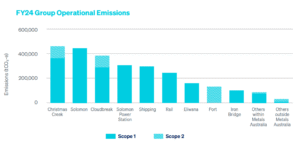
This rise in emissions compared to the previous year (2.55 million tonnes CO₂e) can be due to operational scale and fuel consumption changes.
Scope 3 emissions, mainly from steelmaking customers, stayed high at over 260 million tonnes CO₂-e. This highlights the challenge of lowering emissions throughout the value chain.

In 2024, Fortescue reported that it had already begun trials of electric mining haul trucks and hydrogen-fueled locomotives. The $2 billion loan will help scale these trials into full commercial deployment.
Fortescue aims to stop burning fossil fuels across its Australian iron ore operations by 2030. This “Real Zero” goal targets the absolute elimination of Scope 1 and Scope 2 emissions for its terrestrial iron ore business.
Fortescue’s Four Pillars of a Mining Makeover
The company is moving on four clear fronts:
- electrifying heavy equipment,
- building large renewable power,
- producing green hydrogen, and
- adding energy storage.
Fortescue plans to buy hundreds of electric machines. These machines will replace much of its diesel fleet and cut fuel use at scale.
On the power side, Fortescue is building utility-scale solar to run mines and support green hydrogen. It started work on a 190 MW solar farm near Cloudbreak. It is also seeking approval for a 644 MW solar hub at Turner River.
Together, these projects will add hundreds of megawatts of renewable energy to Pilbara operations. Large solar builds let Fortescue shift electricity away from diesel generators.
Green hydrogen forms a third pillar. Fortescue has a project in Pecém, Brazil, that produces 168,000 tonnes of hydrogen each year. They also have smaller projects, like the 50 MW PEM50 in Australia, which generates around 8,000 tonnes per year. Hydrogen can power heavy equipment or act as a feedstock for low-carbon steel.
The company has completed field trials. This includes a prototype battery haul truck called “Roadrunner.” It is now launching battery systems and transmission lines for major hubs like North Star Junction.
Still, Fortescue recently scaled back some green hydrogen plans and flagged a preliminary $150 million writedown tied to project changes — showing the plan remains costly and technically risky.
If Fortescue executes these steps, it expects to cut millions of tonnes of CO₂e from annual operations and meet its Real Zero target by 2030. These measures are central to its pitch as a miner turning into a green-energy industrial group.
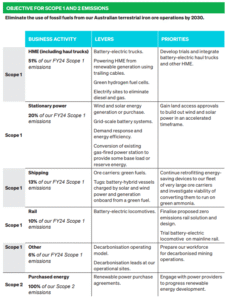
Industry Trends and the Bigger Picture
The mining industry is under pressure to reduce emissions. Investors, customers, and regulators all want cleaner operations. The International Energy Agency (IEA) reports that mining companies worldwide contribute 4–7% of total greenhouse gas emissions. This is mostly because they rely on fossil fuels for extraction and processing.
Green financing in the mining sector is becoming more common. BloombergNEF says global investments in energy transition hit over $1.7 trillion in 2024.
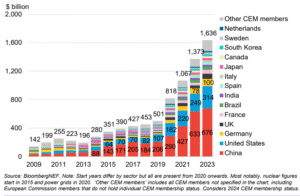
Mining projects are becoming a bigger part of this trend. Fortescue’s deal with China signals a deepening link between resource supply security and sustainable financing.
If Fortescue succeeds, it could set a standard for other resource giants. They will want to align with net-zero goals and stay profitable. It also highlights how the voluntary carbon market, renewable energy credits, and clean technology investments can converge in heavy industry.
Risks, Rewards, and the Road to Real Zero
Despite the funding boost, Fortescue faces significant challenges. Switching from diesel to electric and hydrogen machinery uses new technologies. These are unproven at this scale, so they may have reliability and cost problems. Building renewable energy in remote mining areas needs careful planning and permits.
Market risks are another factor. Global demand for iron ore depends on construction and manufacturing. Economic downturns can hurt the financial success of big decarbonization projects. Additionally, geopolitical tensions between Australia and China could create uncertainty for cross-border financing and trade.
If Fortescue achieves its 2030 targets, it could eliminate more than 3 million tons of CO₂e from its operations annually. This could be one of the first big mining companies to operate without fossil fuels. This change might lower the carbon intensity in the steel supply chain.
Fortescue’s $2 billion green loan is both a financial and strategic step forward. By getting funding from China, the company gains money for its decarbonization projects. It also strengthens its relationship with a key trading partner during the green transition era.
The next few years will test Fortescue’s ability to deploy large-scale renewable energy systems and shift its heavy equipment fleet away from fossil fuels. If the company meets its targets, it could serve as a model for how resource-intensive industries can transition toward net-zero while maintaining strong market positions.
The post Fortescue and China’s $2B Green Deal: Can the Australian Iron Ore Giant Go Fossil-Free? appeared first on Carbon Credits.
Carbon Footprint
Amazon Powers Ahead with Petronas’ Gentari Wind Energy Deal in India
Amazon Web Services (AWS) has signed a power purchase agreement (PPA) with Gentari for an 80-megawatt (MW) wind energy project in Tamil Nadu, India. This agreement is part of Amazon’s broader strategy to achieve net-zero carbon emissions by 2040 and supply its operations with 100% renewable energy.
Once operational in mid-2027, the wind farm could produce about 300,000 megawatt-hours (MWh) of electricity annually. This output can power many local operations and data center tasks. Plus, it helps reduce fossil fuel use.
The project also supports India’s renewable energy growth, which is essential to the country’s 2030 climate targets.
Strengthening Amazon’s Green Portfolio in India
The Gentari deal builds on AWS’s expanding renewable footprint in India. By mid-2025, Amazon had developed 50 large solar and wind projects. It also installed 44 rooftop solar systems at its facilities. Together, these projects represent more than 1.1 gigawatts (GW) of renewable capacity in the country.
This growing portfolio fuels Amazon’s offices, distribution centers, and data centers. It also helps the company aim to be the largest corporate buyer of renewable energy worldwide. The partnership with Gentari adds a strong wind element to its clean energy in India. It works well with the current solar capacity.
Why Wind Matters in AWS’s Net-Zero Game Plan
Amazon has committed to achieving net-zero carbon emissions by 2040, a decade ahead of the Paris Agreement’s target. The company is advancing by using renewable energy, improving energy efficiency, and making operational changes.

Key highlights include:
- Renewable Energy Leadership:
By 2024, Amazon had more than 500 renewable projects worldwide. Their total capacity was over 30 GW, enough to power millions of homes each year.
- 100% Renewable Energy Goal:
The company aims to match all electricity use with renewable energy by 2025, five years ahead of its original target.
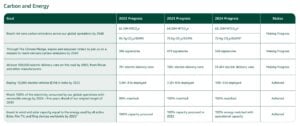
- Electrification of Transportation:
Over 15,000 electric delivery vehicles are now operating globally, part of Amazon’s order for 100,000 EVs from Rivian.
- Emission Reductions:
Between 2021 and 2023, Amazon reported a 7% drop in carbon intensity, meaning emissions per dollar of sales decreased even as operations grew. In 2024, the tech giant emitted a total of over 68 million metric tons of CO2e.

- Carbon Removal Investments:
The company is backing nature-based and technological carbon removal projects, including reforestation and direct air capture.
These initiatives back Amazon’s Climate Pledge. Over 400 companies also signed it. The goal is to reach net zero by 2040.
SEE MORE on Amazon:
- Amazon’s $1 Billion Move Towards Net Zero: Logistics Electrification Across Europe
- Amazon Flies Greener to Net Zero with 9M Liters of Sustainable Fuel from Neste
- Amazon Expands Renewable Energy with 17 New Projects in Spain & First in Portugal
Gentari’s Tamil Nadu Hub: More Than Just a Breeze
Gentari, a clean energy subsidiary of Petronas, is positioning Tamil Nadu’s Karur region as a wind energy hub. The collaboration between Gentari and AWS extends beyond power supply.
In 2023, both companies signed a memorandum of understanding (MoU) to support fleet electrification in India. Gentari has helped deploy over 7,200 electric vehicles for last-mile delivery. This effort has helped Amazon reduce its transportation emissions as the tech giant moves toward net zero.
The partnership tackles two major sources of corporate carbon emissions: energy use and transportation. It does this by combining renewable energy projects with electrified logistics.
India’s Renewable Boom: A Global Leader in the Making
India’s renewable energy sector is growing rapidly. This growth is making the country a global leader in clean energy. In 2023–24, over 70% of new power generation came from renewable sources. This shows that the shift away from coal and fossil fuels is speeding up.
By early 2024, India had over 220 gigawatts (GW) of renewable energy. This total includes solar, wind, hydro, and biomass sources. Solar made up the largest share of recent growth, with over 21 GW of new capacity added in that year alone, followed by 3 GW of new wind projects.

Government targets remain ambitious. India’s National Electricity Plan aims for 500 GW of non-fossil fuel capacity by 2030. This supports its goal to meet 50% of electricity needs from renewable sources by then. This would require adding roughly 30–40 GW of new renewable capacity each year over the next six years.
Industry forecasts say that by 2030, renewable energy will account for about 35% of India’s power generation. This is an increase from around 21% in 2024.
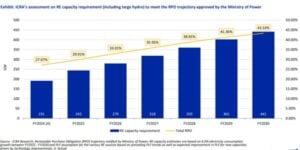
This rapid growth comes from lower technology costs. In India, solar tariffs are very low, around ₹2–₹2.5 per kilowatt-hour (about $0.024–$0.03). State and central government incentives, such as the following, are helping to draw both domestic and foreign investment:
- accelerated depreciation benefits,
- production-linked incentives for solar manufacturing, and
- renewable purchase obligations for utilities.
The International Energy Agency (IEA) says India will likely be the third-largest market for new renewable capacity in the 2030s.
Corporate PPAs: The Hidden Engine of the Energy Transition
Corporate procurement has emerged as a powerful driver of India’s renewable energy expansion. Long-term power purchase agreements (PPAs), such as the AWS–Gentari deal, are popular for growing renewable projects. They offer steady revenue for developers and stable prices for buyers.
These agreements appeal to big energy users like data centers, factories, and logistics hubs. They need cost certainty and want to cut emissions to reach their environmental goals.
India has become a hotspot for corporate renewable energy adoption. BloombergNEF reports that in 2023, India’s corporate clean energy procurement topped 8 GW. This achievement ranks India as one of the top three countries for corporate renewable deals globally.
Top companies like Amazon, Microsoft, and Google, along with Indian giants Tata and Reliance, are signing multi-year PPAs. This helps them secure clean power.
For AWS, the benefits of this approach go beyond energy cost stability. Reaching its 100% renewable energy goal in India by 2025 helps fulfill its global Climate Pledge. This pledge aims for net-zero carbon emissions by 2040.
Opportunities and Obstacles on the Road to 2040
The AWS–Gentari deal shows how corporate partnerships can boost clean energy, but challenges still exist. Integrating variable renewable energy into India’s grid requires careful planning and investment in storage and transmission. Large-scale projects may also face land acquisition hurdles and permitting delays.
Even with these challenges, the outlook for renewable energy in India remains strong. AWS’s expanding presence in the country, along with key partnerships like this, shows how business needs can speed up the shift to a cleaner and stronger power sector.
AWS’s deal with Gentari for 80 MW of wind power in Tamil Nadu is more than buying renewable energy. It’s a smart investment in India’s clean energy system. By linking wind power generation with electric vehicle deployment, Amazon shows how corporate partnerships can deliver economic benefits and net zero progress in one of the world’s fastest-growing energy markets.
READ MORE:
- Amazon (AMZN) Stock Dips Despite Q2 2025 Beat: Cloud Growth Slows, Net-Zero Push Expands
- US Corporations Ramp Up Renewable Energy, Amazon Leads the Pack
The post Amazon Powers Ahead with Petronas’ Gentari Wind Energy Deal in India appeared first on Carbon Credits.
Carbon Footprint
Gevo Stock Surges 65% as Carbon Credits Bring in First-Ever Profits
Gevo, Inc., a renewable fuels and carbon solutions company, has reported its first-ever profitable quarter in Q2 2025, marking a major shift in its financial performance. This is all thanks to its carbon credit sales of around $22 million and other low-carbon product sales.
The company posted net income of $2.1 million, a sharp turnaround from previous losses. Adjusted earnings reached $17 million, and earnings per share came in at $0.01. That is well above analyst forecasts of a loss of $0.07.
Revenue for the quarter totaled $43.41 million. This was about $14 million higher than the previous quarter, though slightly below some market expectations. This earnings surprise drove a dramatic reaction in the stock market.
Gevo shares surged 65% in after-hours trading following the announcement. It has continued to climb about 46% in pre-market trading the next day.
This milestone is significant for Gevo. The company has been working to diversify revenue streams and build a sustainable business model that integrates renewable fuel production with carbon reduction initiatives.
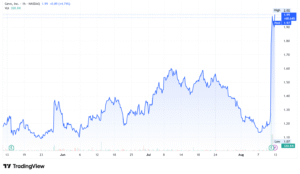
Carbon Credits: The Secret Sauce Behind Gevo’s First-Ever Profit
A major factor behind Gevo’s profitability was its revenue from carbon credits. This segment has become an important part of its business model. The company benefits from two main types of credits:
Clean Fuel Production Credits (CFPCs):
These credits contributed roughly $21 million to net income during the first half of 2025. They reward low-carbon fuel producers for displacing fossil fuel use.
Carbon Dioxide Removal (CDR) credits:
In Q2, Gevo generated over $1 million from selling high-integrity carbon removal credits. The company expects to earn $3–5 million a year from CDR credits soon. In the long run, this could grow to over $30 million each year.
In addition, Gevo completed its first sale of carbon removal credits certified by Puro.earth. It is a leading registry for engineered carbon removal. These credits are backed by carbon capture and storage (CCS) at Gevo’s planned North Dakota ethanol facility. The plant is designed to sequester up to 1 million metric tonnes of CO₂ per year.
By monetizing its carbon abatement efforts, Gevo is tapping into a rapidly growing market. This strategy reduces its reliance on volatile biofuel margins. Also, it positions the company to benefit from both regulatory programs and voluntary corporate climate commitments.
Dr. Patrick Gruber, Gevo’s Chief Executive Officer, remarked:
“This was a landmark quarter for us…I really like these results regarding carbon sales. It’s outstanding that companies are willing to step up and pay for what they believe in–carbon reduction. It’s a new product; and for us, it’s a co-product. Our fuel manufacturing systems are designed end-to-end to abate carbon. The result is that we can manufacture cost-competitive renewable liquid fuels, while abating carbon.”
Turning CO₂ into Cash: CCS, Carbon Removal, and Net Zero
Gevo’s business is built on producing renewable fuels such as sustainable aviation fuel (SAF) and renewable natural gas (RNG. These are while integrating carbon reduction technologies to maximize climate benefits.
In the first quarter of 2025, the company reported over 100,000 metric tons of carbon abatement. This combines CO₂ captured through CCS and emissions avoided through renewable fuel production.
The company’s CCS operations in North Dakota could play a critical role in scaling these achievements. Once it starts working, the facility can remove and store CO₂. This amount equals the yearly emissions of over 200,000 cars.
These milestones help Gevo reach its goal of providing clean fuels and real carbon reductions. This aligns with the needs of airlines, shipping companies, and other sectors under increasing pressure to cut emissions.
Gevo aims to reach net-zero greenhouse gas emissions by 2050. The company’s strategy focuses on producing low-carbon fuels and removing CO₂ from the atmosphere.
Carbon credits are a key part of Gevo’s plan. By selling high-quality credits from CCS and renewable fuel projects, the company earns revenue while helping other businesses offset their emissions. These efforts cut Gevo’s own carbon footprint and support wider climate goals.
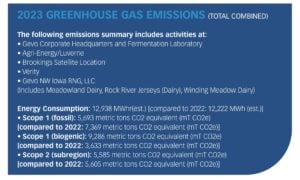
Carbon Markets: Opportunities and Challenges
Gevo’s success underscores the growing influence of carbon markets in the clean energy economy. The voluntary carbon market, valued at about $2 billion in 2024, is projected to grow to $50 billion or more by 2030, according to industry forecasts. Demand for high-quality, verifiable credits is rising as corporations seek to meet net-zero targets.

High-integrity carbon removal credits, like those sold by Gevo, are particularly short in supply. This allows sellers to command premium prices. However, the market is also facing scrutiny over credit quality and transparency.
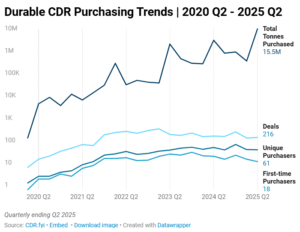
For Gevo, selling credits backed by measurable and permanent CO₂ storage offers a competitive advantage in a market where buyers are increasingly selective.
With the global push for decarbonization growing stronger, companies that blend renewable energy and carbon removal could attract long-term buyers. This is true for both compliance and voluntary markets.
Why Investors Are Suddenly Paying Attention
The market’s strong response to Gevo’s Q2 results reflects investor confidence in the company’s shift toward profitability and diversified revenue sources. The surge in trading volume—over 71 million shares traded on the day of the earnings release. This signals that both institutional and retail investors are paying attention to its growth story.
If Gevo keeps making money from carbon credit sales and grows its clean fuel production, it could attract climate-focused funds and ESG investors with a strong track record. However, market volatility in both fuel prices and carbon credits could still present some challenges.
Scaling the Model: Can Gevo Keep the Momentum?
Gevo will expand its production of sustainable fuels. It also plans to grow its CCS capabilities and carbon credit sales. This strategy aligns with global climate policies that reward low-carbon energy solutions and penalize heavy emitters.
The company is combining renewable fuel production and measurable carbon removal. This strategy places it in a fast-growing area that connects energy and environmental sectors. If it keeps showing strong results and clear credit checks, it could set a standard for blending clean energy and carbon markets.
Gevo’s first profitable quarter shows the financial promise of combining renewable fuel production with carbon credit sales. The company is responding to the rising demand for high-quality carbon removal credits. Their effective operations help them stand out in the new clean energy and carbon economy.
Gevo’s ability to sustain profitability will depend on scaling production, securing long-term credit buyers, and navigating the fast-evolving landscape of carbon markets.
The post Gevo Stock Surges 65% as Carbon Credits Bring in First-Ever Profits appeared first on Carbon Credits.
-
Climate Change2 years ago
Spanish-language misinformation on renewable energy spreads online, report shows
-
Climate Change Videos2 years ago
The toxic gas flares fuelling Nigeria’s climate change – BBC News
-

 Greenhouse Gases1 year ago
Greenhouse Gases1 year ago嘉宾来稿:满足中国增长的用电需求 光伏加储能“比新建煤电更实惠”
-

 Climate Change1 year ago
Climate Change1 year ago嘉宾来稿:满足中国增长的用电需求 光伏加储能“比新建煤电更实惠”
-

 Carbon Footprint1 year ago
Carbon Footprint1 year agoUS SEC’s Climate Disclosure Rules Spur Renewed Interest in Carbon Credits
-
Climate Change2 years ago
Why airlines are perfect targets for anti-greenwashing legal action
-
Climate Change Videos2 years ago
The toxic gas flares fuelling Nigeria’s climate change – BBC News
-
Climate Change2 years ago
Some firms unaware of England’s new single-use plastic ban

